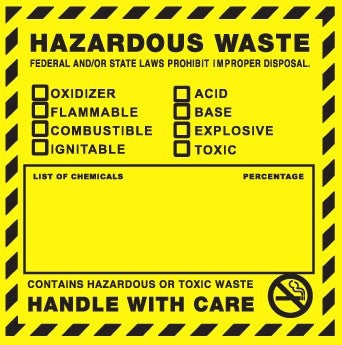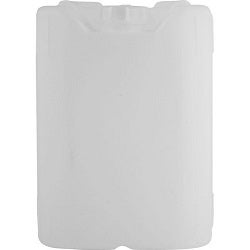Chemical Waste
Many laboratories on campus routinely generate hazardous waste and are subject to Federal, State, and Local regulations that govern the generation, storage, and disposal of chemical waste. Prudent waste management is necessary for resource conversation and pollution prevention.
All hazardous waste should be collected and seggerated into the appropriate waste stream and container to ensure proper disposal. Hazardous waste should never be disposed in the general trash or laboratory sinks.
Hazardous waste should segregate by reactivity and collected in waste containers supplied by EHS. Never reuse old solvent bottles or open containers without prior consulation from EHS.
Segregation of the waste stream should be based on the underlying hazards
- Oxidizer
- Flammable
- Combustible
- Ignitable
- Acids
- Bases
- Explosive
- Toxic

All waste containers should be in good condition, leak proof, and must have an EHS hazardous waste sticker affixed to the container with the information filled out
Placed in a desigated area and submit an EHS waste pickup request.
WASTE CONTAINERS USED IN COLLECTION OF HAZARDOUS WASTE
Liquid Carboys

Used to collect waste solvents, aqueous water with any characteristic waste componets, used pump oil. No solids material should placed in this.container. Container should should be capped closed when not in use.
Solid Waste

Waste including but not limited to sample vials, TLC plates, silica gel, and etithium bromide can be disposed in this container. Container should have a plastic liners and lid must be closed when not in use. Contaminated material used for spill cleanup may also be disposed in this container
